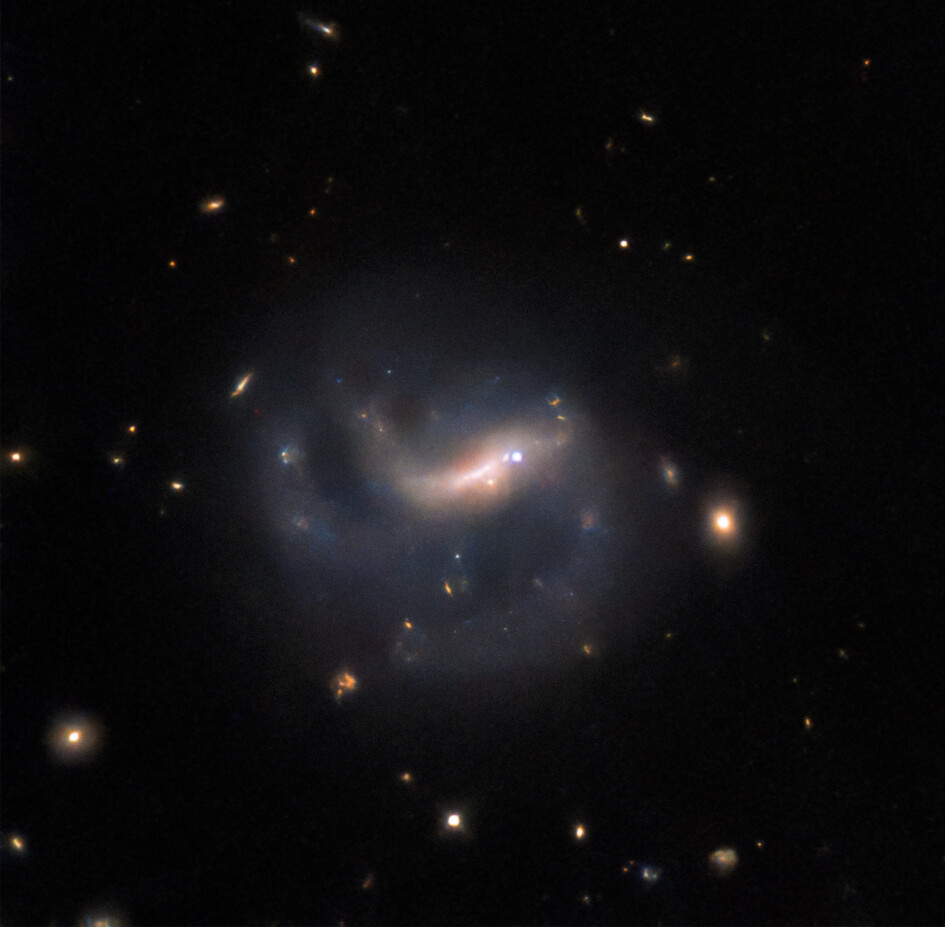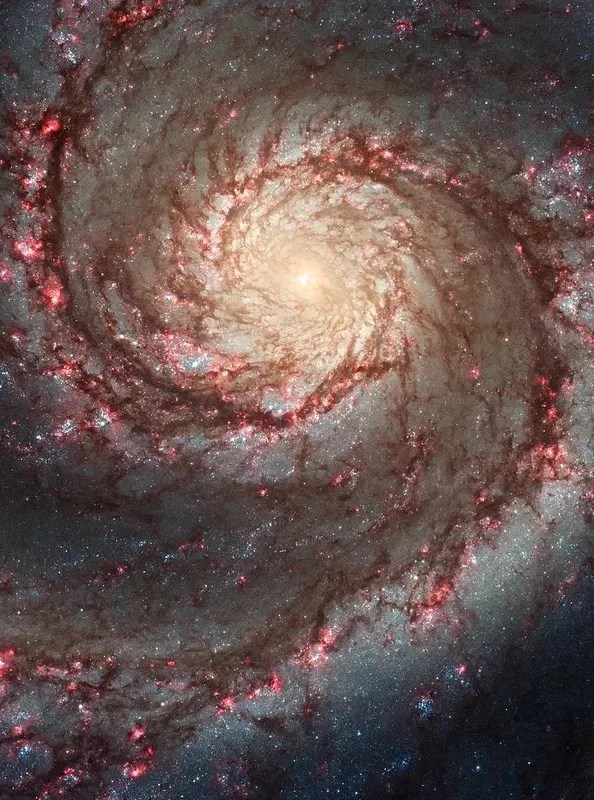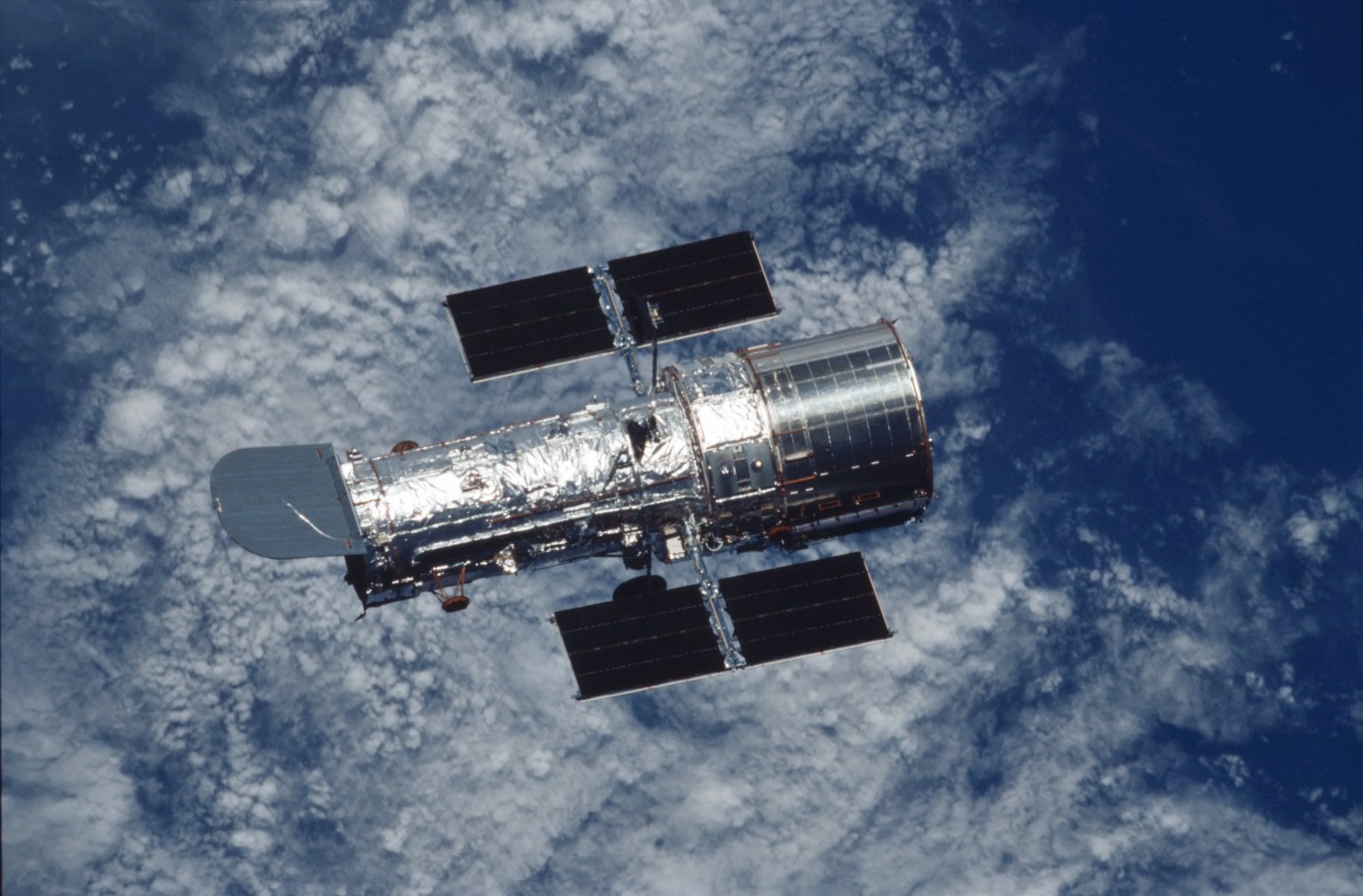Hubble Spotlights a Supernova
This NASA/ESA Hubble Space Telescope image features the galaxy LEDA 857074, located in the constellation Eridanus. LEDA 857074 is a barred spiral galaxy, with partially broken spiral arms. The image also captured a supernova, named SN 2022ADQZ, shining brightly on the right side of the galaxy’s bar. Several evolutionary paths can lead to a supernova […]

2 min read
Hubble Spotlights a Supernova
This NASA/ESA Hubble Space Telescope image features the galaxy LEDA 857074, located in the constellation Eridanus. LEDA 857074 is a barred spiral galaxy, with partially broken spiral arms. The image also captured a supernova, named SN 2022ADQZ, shining brightly on the right side of the galaxy’s bar.
Several evolutionary paths can lead to a supernova explosion. One is the death of a supermassive star. When a supermassive star runs out of its hydrogen fuel, it begins a stage where it fuses the remaining elements to heavier and heavier ones. These final fusion reactions generate less and less outward force (radiation pressure) to balance the star’s gravitational tug inward. As heavier elements form in the star’s core, the core itself begins to fully collapse under its own gravity, and the star’s outer layers blast away in a supernova explosion. Depending on the star’s original mass, its core may collapse to nothing but neutrons, leaving behind a neutron star, or its gravity may be so great that it collapses to a black hole.
Astronomers detected supernova SN 2022ADQZ with an automated survey in late 2022. This discovery led them to look at the supernova’s host galaxy, LEDA 857074, with Hubble in early 2023.
Hubble’s sharp vision means that it can see supernovae that are billions of light years away and difficult for other telescopes to study. A supernova image from the ground usually blends in with the image of its host galaxy, but Hubble can distinguish a supernova’s light from its host galaxy’s, measuring the supernova directly.
Astronomers detect thousands of supernovae annually, but the chance that they spot one in any particular galaxy of the millions that are cataloged is slim. Thanks to this supernova, LEDA 857074 joins the ranks of other celestial objects with its own Hubble image.
Explore More
Media Contact:
Claire Andreoli
NASA’s Goddard Space Flight Center, Greenbelt, MD
claire.andreoli@nasa.gov
Share
Details
Related Terms
What's Your Reaction?













































